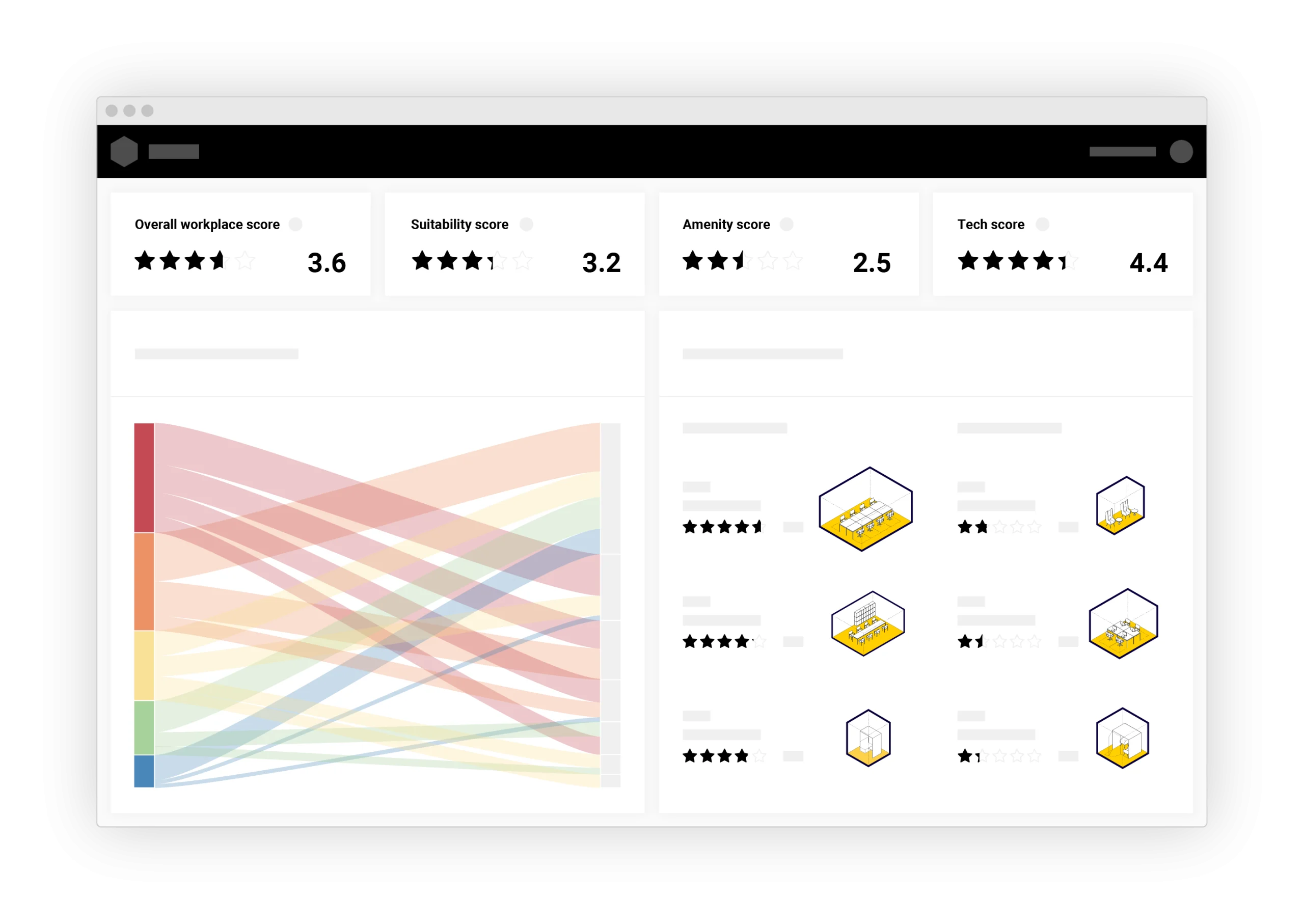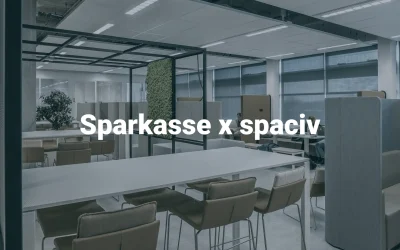How user feedback will supercharge your office optimisation
As work dynamics evolve and office occupancy rates decline, businesses are reassessing their workplace environments. They recognise the need for offices to evolve, enticing employees back and fostering personal interaction. Understanding and addressing your workforce’s needs is key to optimise your office and create an environment that effectively supports your users in achieving their goals.

Unveiling the Power of Feedback for Office Optimisation
Feedback serves as a crucial tool for office optimisation, providing valuable insights into the needs and preferences of your users. However, many organisations struggle to streamline the data-driven feedback process effectively. It’s crucial to ask: Is this a one-time initiative or an ongoing effort towards optimisation?
While a one-time optimisation can improve the user experience in existing spaces and inform workplace strategy for new ones, consistently and systematically gathering user feedback enables a deeper understanding of the evolving needs of the workforce. This approach allows businesses to address issues promptly, ensuring that the workspace remains aligned with the expectations and experiences of its users.
Pinpointing Areas for Enhancement
With the help of spaciv, and by including employees in the feedback process, organisations gain access to a wealth of detailed metrics. Besides the overall space rating, which measures user satisfaction with the office environment, spaciv provides insights into the availability of different spaces, such as meeting rooms or workspaces. This allows them to assess their spatial resources effectively. Another invaluable feature is the assessment of the office’s suitability for specific activities, such as deep focus work or face-to-face meetings.
This detailed analysis is further enhanced by spaciv’s activity-to-space module mapping feature, which provides a clear understanding of how different activities align with available spaces. By leveraging this feature, organisations can identify areas for improvement and make informed decisions to optimise user experience and productivity. The resulting dataset also enables organisations to allocate optimisation efforts to areas that have the most significant impact on user experience.

As an example: spaciv revealed during a recent project that a particular space module designed for dedicated project work was underutilised, prompting our client to reallocate resources and optimise the space preferred by users. This decision freed up office space for alternative uses that were in higher demand. Another instance involved strategically reallocating limited budgets to space modules that significantly impacted daily operations, prioritising areas with substantial part in the user experience over those with less favourable ratings.
Implementing Feedback-Driven Changes
Implementing changes based on feedback requires a strategic approach that considers the diverse needs of employees and the overarching goals of the organisation. Keep these basics in mind when facilitating the process:
1. Prioritise impact
Start by prioritising feedback based on its impact on employee experience and business objectives. Focus on addressing high-priority issues that have the most significant potential to improve the workspace.
2. Test ideas
Consider implementing small-scale changes to test proposed solutions before full implementation. Pilots allow for further user feedback and adjustment before rolling out changes across the entire workspace.
3. Stay flexible
Recognise that office environments are dynamic and evolving. Remain flexible and adaptable to accommodate changing needs and preferences over time. Regularly reassess feedback and make adjustments as necessary to ensure continued improvement. (Read: How a workplace changed over 365 days of evolution)
By remembering these basics and leveraging insights from feedback, you can effectively implement changes that enhance the office environment, support employee well-being, and drive organisational success.

Implementing Feedback-Driven Changes
Your personal live demo
Get to know spaciv in 30 minutes! See how you and your organisation can benefit from AI-powered workplace projects.
Your guide to analysing your corporate real estate portfolio
Your Guide to Analysing your Corporate Real Estate Portfolio with spacivAs companies adapt to new ways of working, they're also rethinking their approach to corporate real estate. Whether they're embracing remote working or hybrid models, every decision about real...
New office: How Sparkasse saved 32% with AI
Customer storySparkasse x spacivLeveraging spaciv's AI-powered planning, Sparkasse tackled uncertainties and achieved a 32% reduction in new office and energy costs. Showing their commitment to more sustainable future and enabled crafting a user-centric and...
How to turn user needs into a future-proof office space
How to accelerate your office transformation and turn your user needs into a future-proof office spaceAs remote work, flexible schedules, and advancing technologies reshape the business landscape, companies are rethinking their corporate real estate and office layouts...



